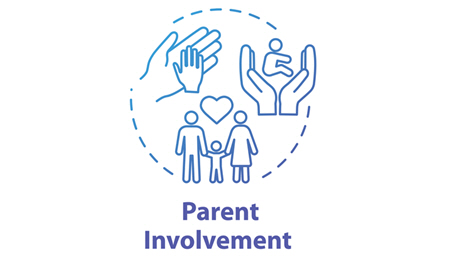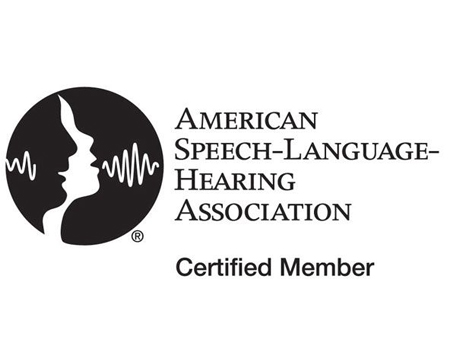General Questions
Where are you located?
AAC on the Lakeshore is located in NE lower Michigan on Lake Huron. Virtual therapy is available throughout lower Michigan. In-person therapy is available in Oscoda on a limited basis.
What are your office hours?
Therapy is conducted Tuesdays and Thursdays, with 45-minute slots available from 11:00 am to 6:00 pm. Slots on Wednesdays are spent consulting with an advocate team regarding School Complaints. Mondays are reserved for meetings and planning from 9:00 am to 4:00 pm. Friday mornings are report writing time.
Do you accept insurance?
Yes, I am an in-network provider for Medicaid, Aetna, Blue Cross Blue Shield, and Priority Health. Out-of-network provisions are possible as well. Insurance is billed for you. I am willing to become a provider for other insurance companies (at my discretion)
How do I get my child started?
An initial consultation, either in-person or by ZOOM, is free of charge. If you wish to pursue therapy, an evaluation is necessary. Based on the evaluation, a therapy program of 8 – 12 weeks is offered, usually once per week. For more detailed information, please see the ABOUT page.
How long is a typical session?
Typical sessions last 45- 50 minutes. This time includes parent time, as well as therapy for the child.
With in-person therapy, parent and child can be together at the same time!
With teletherapy, the initial 10-15 minutes of the session are spent with the parent to discuss any questions, concerns, and/or to teach strategies for communicating with your child using AAC.
The remaining time is spent in therapy, cotreating with the parent for optimal benefit to all.
How do I pay?
If insurance is not involved, payment by cash, check, Square, or via Venmo is accepted (Venmo: @Linda-KelleyHartman)
May I cancel an appointment? Do you have a cancellation policy?
Working with children, especially those with severe disabilities, has taught me that last-minute illnesses can occur. For this reason, I allow cancellations with no more than a 6-hour notice for illnesses. I do, however, reserve the right to charge a cancellation fee for notice of less than 6 hours.
How do I make an appointment?
Appointments are best made by contacting me directly, either by phone (616) 260-3013 or email (lindakhartman@aaclakeshorepllc.org).
Are siblings allowed in therapy sessions?
I feel very strongly that the session is a private thing for the child with the disorder. Sibling presence can often be difficult for the child and the sibling. Young siblings are ill-prepared to be in a session not directed toward them. It’s not their fault; they aren’t at that stage in life yet.
The conflict that can ensue is not helpful to anyone involved. Therapy must target the needs of the individual with the disorder. Sibling involvement can occur once therapy is established, with advance knowledge so the session can include the sibling successfully.
Treatment Questions
What type of therapy techniques do you use?
Autonomous communication is our goal for your child. Therapy is individualized to meet this.
There are numerous ways to work in communication therapy. The techniques used have a strong foundation based on research and/or have proven to obtain results. These include oral motor and speech therapy techniques for severe articulation disorders, a functional approach to teaching expressive language skills (spoken or AAC), the use of the Core Vocabulary Approach, the use of Brown’s Stages for sentence expansion that includes grammar/parts of speech, and Partner Assisted techniques to facilitate communication in all environments.
With what age range do you work?
I typically work with children, adolescents, and young adults.
Therapy for children with severe and complex communication issues should start as soon as possible. Many children begin at age 2 or before! There are no prerequisites to starting Augmentative & Alternative Communication and speech therapy.
Some form of successful communication must begin as early as possible. Therefore, it is vital to begin early.
With whom do you not work?
My focus is predominately on those with severe and complex communication needs. I am trained in traditional speech & language therapy, as well. I choose to work with families and school systems in which conventional therapy does not meet communication needs.
I am here to help the child, the family, and the school staff, if necessary, in a collaborative format.
What are my responsibilities as a parent in therapy?
 Parents are the first teachers for any child. However, assisting children in communicating is not a set of lessons given as if in a classroom. The best way to “teach” is through modeling and facilitation techniques that increase communication likelihood.
Parents are the first teachers for any child. However, assisting children in communicating is not a set of lessons given as if in a classroom. The best way to “teach” is through modeling and facilitation techniques that increase communication likelihood.
Drills and cognitive tasks usually are met with resistance over time with children. It is important to remember that children learn to speak socially first, then for academic tasks.
 Parents are taught these techniques over time, with SMoRRES being the guide (see above reference). This approach uses a demonstration by the therapist and through At Home Practice assigned.
Parents are taught these techniques over time, with SMoRRES being the guide (see above reference). This approach uses a demonstration by the therapist and through At Home Practice assigned.
One of the most beneficial techniques is talking to your child using the AAC device. In many ways, this is like learning a second language or sign language. If the new language is not used in the child’s environment, the child will not learn how to use it! They must see the new language used in everyday communication, just as typically developing children hear their parents talk every day.
If your child is assigned the Oral Preparation Sequence (OPS), you will receive instruction on how to do this at home, preferably daily for optimum effect.
If sound work is involved, you will learn how to say assigned words in a “new way” that bridges the gap between how your child speaks now and what is ideal. Rather than drill for these words, fun activities are the best way to motivate the child to say the words.
 It sounds daunting, huh? I know it can be. My suggestion is to make the At Home Practice a part of your daily routine. Then it becomes automatic for you and your child.
It sounds daunting, huh? I know it can be. My suggestion is to make the At Home Practice a part of your daily routine. Then it becomes automatic for you and your child.
For example, having the AAC device charged overnight and putting it in front of your child as much as possible so that you can communicate with it is HUGE!
Many users explore their devices when they are alone and have no pressure to communicate. Then, if you have a chance to model your words on the device, things are set to do so!
If you asked to repeat any of the therapy activities, make it part of what you already do! Pair it with a similar activity (siblings doing their homework). Can’t do the whole thing? That’s OK. Just start and get as far as you can. It’s all good!
Do you offer teletherapy?
 Yes, teletherapy via ZOOM is one avenue of treatment. The initial 10-15 minutes of the session is spent with the parent to discuss any questions, concerns, and/or teaching strategies for communicating with your child using AAC. The remaining time is spent in therapy, cotreating with the parent for optimal benefit to all.
Yes, teletherapy via ZOOM is one avenue of treatment. The initial 10-15 minutes of the session is spent with the parent to discuss any questions, concerns, and/or teaching strategies for communicating with your child using AAC. The remaining time is spent in therapy, cotreating with the parent for optimal benefit to all.
 Questions about Me
Questions about Me
How long have you been in practice?
I have been an ASHA certified Speech-Language Pathologist since 1978.
I have worked as traditional Speech-Language Pathologist with typically developing students in public schools. I have been a classroom teacher for children with Severe Speech-Language Impairments and those with Learning Disabilities. In the 1990s, I had a private practice entitled The Parent’s Partner, Inc., but the recession necessitated my return to the public school system. I was lucky enough to obtain two positions that I love at public school Center-Based programs with a target population.
Now AAC on the Lakeshore, PLLC is my retirement ‘gig.’
AAC on the Lakeshore, PLLC began in January 2018, in Grand Haven, MI. Due to client demands in Grand Rapids as well as Ottawa County, and my husband’s employment being in Caledonia, we decided to move to Allendale. This location is central to my clients. With the advent of COVID-19, I learned how to do ‘tele-therapy’ to reach those who not only do not wish in-person contact, but also those who are a distance away and do not wish to commute.
What are your strengths as therapist?
I learned a long time ago to ‘assume competence’ for those individuals with complex communication needs. I also learned how to read the non-verbal signs (smiles, looks, gestures, etc.) and put the language to those behaviors when I speak to them.
The best thing one can do is establish a relationship with the individual. When we interpret these behaviors correctly and the words that are given, the individual feels valued! If I am wrong, the individual quickly lets me know, and I put words to that. Either way, the individual feels heard.
What is your educational background?
Both of my degrees are from Western Michigan University (Go Broncos!) My Bachelor of Arts’ Degree is in Speech Pathology and Audiology, while my Master of Arts’ degree is in Speech Pathology. I have 30 hours of coursework in Learning Disability from Calvin College, but do not have a full degree there.
For more information, see the ABOUT ME section.

Fun Question
Is it true that speech pathologists have ways to make you talk?
I had a T-Shirt with that saying!
In truth, no one can make someone talk if they don’t want to talk. So how do you make someone want to talk? You “facilitate” the conversation so that the individual feels valued. See the question about strengths for more information!

